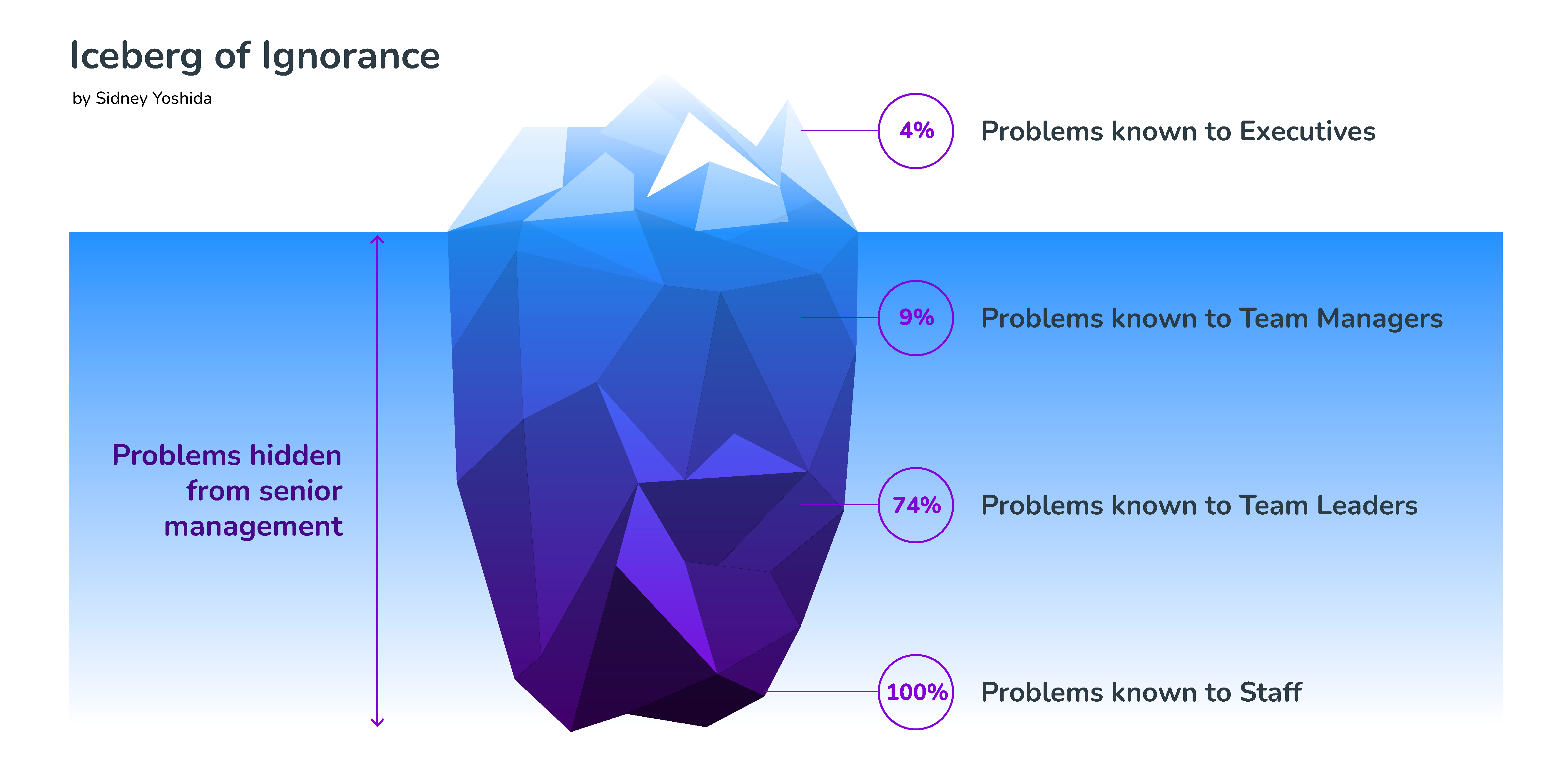What's your employees’ number one concern right now?
According to Sidney Yoshida’s Iceberg of Ignorance ‘only 4% of an organisation’s front-line problems are known by top management, 9% are known by middle management, 74% by supervisors and 100% by employees.’

To prevent the iceberg from sinking your ship, you need a modern employee listening strategy. Here’s why.
Why do senior leaders only know 4% of employee concerns?
Traditional methods of employee listening are not cut out for today’s working world.
- Dispersed locations. 80% of the global workforce is deskless and 80% of organisations have some level of remote working. Senior leaders therefore rely on digital communication tools to connect with dispersed staff, but top-down emails and pulse surveys fail to engage employees.
- Diverse employees. The same groups that speak up in meetings are the same groups that respond to traditional employee listening methods. If you rely on town halls, polls and corporate broadcasts, you’ll only hear from the same 'louder' voices and more important issues go unreported.
- Delayed feedback. Employees' concerns are constantly changing. If you only hear from employees on a weekly, monthly or quarterly basis, it’s impossible to resolve issues before they turn into problems.
How do 'unheard concerns' impact your business?
Failing to hear from employees at every level can negatively impact talent retention, change implementation and reputational control.
- High employee turnover. The reasons for employee churn are varied - from culture and compensation to management and motivation - but the impact of high churn is always the same: it’s expensive and disruptive. Given 82% of workers want to be treated as a person, not just an employee, they’re more likely to leave if they feel unheard and not respected.
- Ineffective change initiatives. Implementing change is really hard if you don’t know what your employees are thinking. If you only hear from the same subset of employees, you’re more likely to misread employees’ core concerns and less likely to get widespread employee buy-in for change.
- Reputational damage. You don’t want to hear about employee concerns from Glassdoor or Reddit. To avoid internal affairs filtering onto external forums, you need to know about frontline problems early, respond to affected employees directly and resolve issues before they become public knowledge.
How can senior leaders hear from all voices, not just the loudest?
It’s simple: with a modern employee listening strategy.
From gathering continuous, real-time feedback and ideas from employees to uncovering and mitigating employees’ priority concerns, a modern employee listening strategy is a crucial tool for senior managers to continually get ahead of emerging issues and drive organisational change.
A modern employee listening strategy includes:
- Optional anonymity. To surface more diverse opinions, you need to provide a safe space for quieter voices to come to the fore, be it women, people of colour or junior staff. Optional anonymity provides the psychological safety for your frontline staff to share their real concerns.
- Always-on listening. To understand frontline concerns today, you need a modern employee listening platform that’s always-on and pinpoints priority situations as they emerge. By continually hearing what matters most, you always know where to act first to diffuse simmering tensions.
- Two-way dialogue. Listening to employees is just one side of the coin, you need to be able to respond to individuals and groups too. Two-way dialogue enables leaders to engage with all of their staff, empathise with people’s concerns directly, and forge strong frontline connections.
Don't let the iceberg sink your ship
Listening to employees doesn’t just show you care, but enables you to take meaningful action to improve the employee experience and enhance company performance.
Want to know more than just 4% of employee concerns? Check out our guide on Employee listening in 2023: how to create a modern employee listening strategy.


